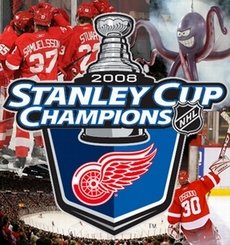From last year:
Wednesday, July 04, 2012
Happy Independence Day!
John Trumbull's Declaration of Independence is a 12-by-18-foot oil-on-canvas painting in the United States Capitol Rotunda that depicts the presentation of the draft of the Declaration of Independence to Congress. (From The Wiki)
It's been my habit in recent years to publish the Declaration of Independence every Fourth of July, but I'm gonna do sumthin' different this year. I found this old post from 2007 and it's on topic and on-point for today...We’re not all of us language-people. But…for those who just might be such a person, I offer “The Stylistic Artistry of the Declaration of Independence.”
The Declaration of Independence is perhaps the most masterfully written state paper of Western civilization. As Moses Coit Tyler noted almost a century ago, no assessment of it can be complete without taking into account its extraordinary merits as a work of political prose style. Although many scholars have recognized those merits, there are surprisingly few sustained studies of the stylistic artistry of the Declaration.(1) This essay seeks to illuminate that artistry by probing the discourse microscopically--at the level of the sentence, phrase, word, and syllable. By approaching the Declaration in this way, we can shed light both on its literary qualities and on its rhetorical power as a work designed to convince a "candid world" that the American colonies were justified in seeking to establish themselves as an independent nation.(2)
[…]
Like the introduction, the next section of the Declaration--usually referred to as the preamble--is universal in tone and scope. It contains no explicit reference to the British- American conflict, but outlines a general philosophy of government that makes revolution justifiable, even meritorious:
We hold these truths to be self-evident, that all men are created equal, that they are endowed by their Creator with certain unalienable Rights, that among these are Life, Liberty and the pursuit of Happiness. That to secure these rights, Governments are instituted among Men, deriving their just powers from the consent of the governed. That whenever any Form of Government becomes destructive of these ends, it is the Right of the People to alter or to abolish it, and to institute new Government, laying its foundation on such principles and organizing its powers in such form, as to them shall seem most likely to effect their Safety and Happiness. Prudence, indeed, will dictate that Governments long established should not be changed for light and transient causes; and accordingly all experience hath shown that mankind are more disposed to suffer, while evils are sufferable, than to right themselves by abolishing the forms to which they are accustomed. But when a long train of abuses and usurpations, pursuing invariably the same Object evinces a design to reduce them under absolute Despotism, it is their right, it is their duty, to throw off such Government, and to provide new Guards for their future security.
Like the rest of the Declaration, the preamble is "brief, free of verbiage, a model of clear, concise, simple statement."(11) It capsulizes in five sentences--202--words what it took John Locke thousands of words to explain in his Second Treatise of Government. Each word is chosen and placed to achieve maximum impact. Each clause is indispensable to the progression of thought. Each sentence is carefully constructed internally and in relation to what precedes and follows. In its ability to compress complex ideas into a brief, clear statement, the preamble is a paradigm of eighteenth-century Enlightenment prose style, in which purity, simplicity, directness, precision, and, above all, perspicuity were the highest rhetorical and literary virtues. One word follows another with complete inevitability of sound and meaning. Not one word can be moved or replaced without disrupting the balance and harmony of the entire preamble.I don’t know just how many times I’ve read the Declaration of Independence, but it’s been more than a few. One cannot read the document without a sense of wonder at the magnificence of the words and the way they’re put together. That said, I’ve never read an analysis of the style, thought, and historical/political precedents that went into the composition of the document. This “Stylistic Artistry” essay is one of those rare things one finds on the ‘net: A Keeper. Duly saved in my “Important Stuff” directory.
What I said back then: the essay is a keeper. Much more at the link.Have a safe and happy Fourth!
I can't improve on that.





.jpg)




It IS a beautiful piece of writing. Would that our current federal leaders might take the time to read it and truly understand it.
ReplyDeleteAgreed, in spades.
DeleteIt remains the gold-standard for sure. And my favorite bit:
ReplyDeleteBut when a long train of abuses and usurpations, pursuing invariably the same Object evinces a design to reduce them under absolute Despotism, it is their right, it is their duty, to throw off such Government, and to provide new Guards for their future security.
Seems perhaps we are there again.
We're close, if not quite there yet.
Delete